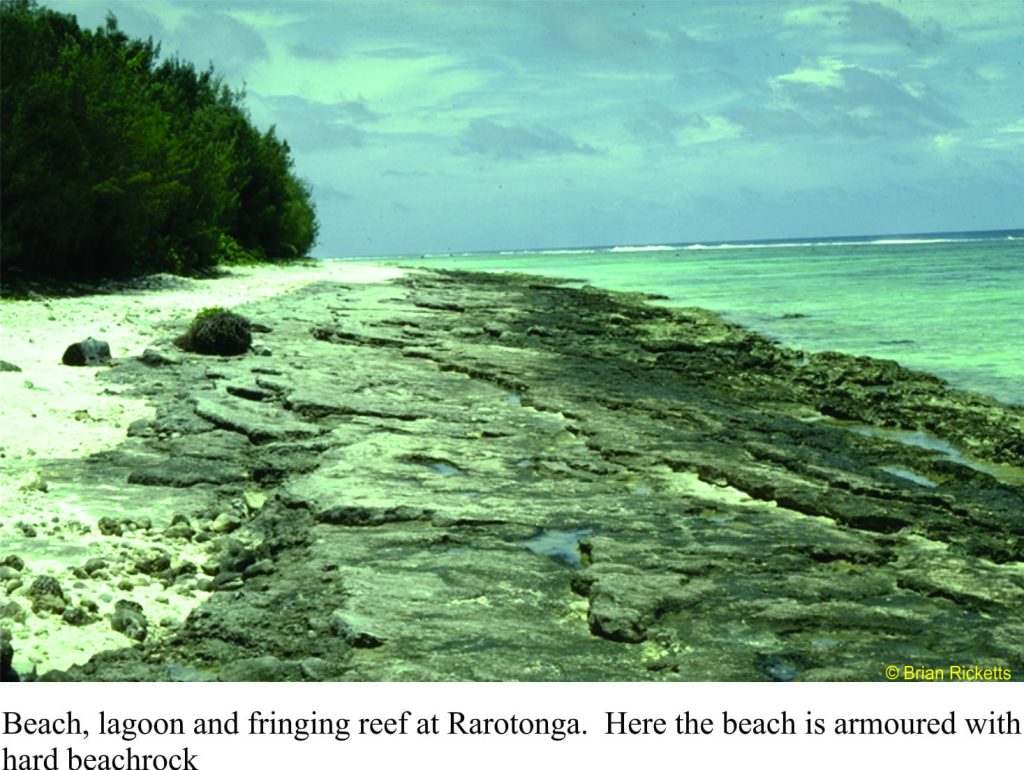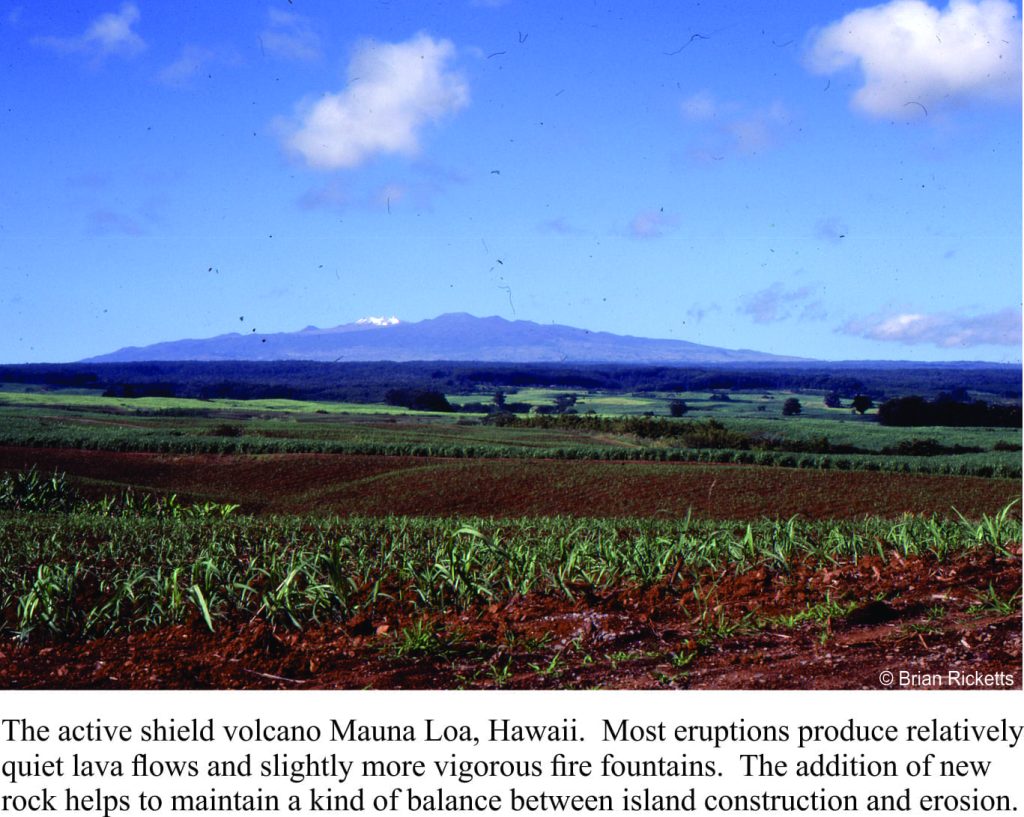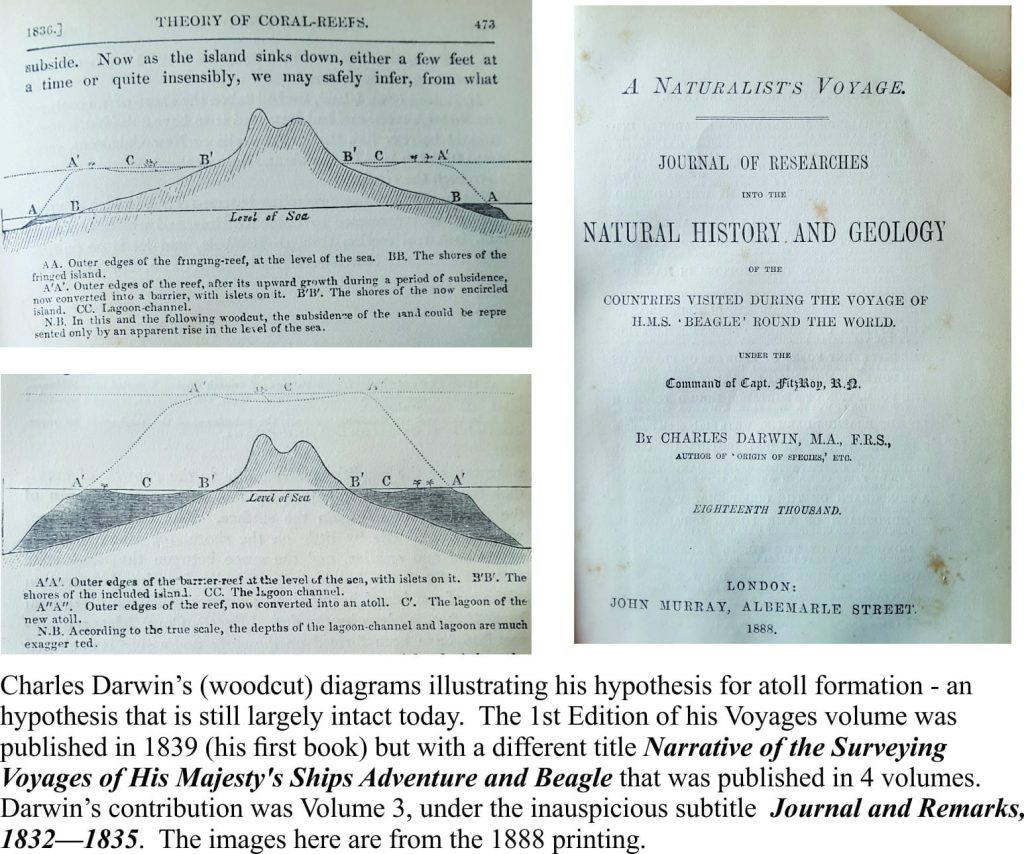Oceanic islands, specks, some barely visible across expansive seas; conjured images of a tropical paradise – the overstated tourist brochure or the understated Gauguin portrait. The images are iconic. And they are home to tens of millions of people. Not stated in all the hype is their fragility – a fragility borne of all the processes which shape oceanic islands; geological, biological, climate and perhaps anthropological. We have been reminded of their fragility by recent evidence that some islands are at risk of disappearing beneath the waves. Media reports of their demise tend to focus on rising global sea levels caused by climate change. However, it is important to consider an island’s state in the context of all the natural processes that led to its formation, because its ultimate fate, from a geological perspective, is to founder.
From the bottom of the sea
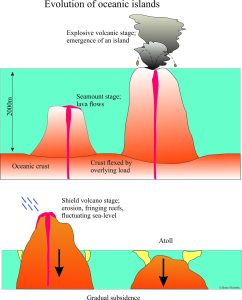 In the context of plate tectonics, all oceanic islands are constructed on oceanic plates. All have a foundation of volcanic rock. They begin life as submarine volcanoes where lavas issuing from what is commonly referred to as a hotspot, gradually construct a volcanic edifice. This commonly takes place in water depths of 1000m and more. Deep-water submarine volcanoes are called seamounts; they rise thousands of metres above the sea floor and despite not having seen the light of day, harbour a prolific, commonly unique array of marine life forms. The largest seamount on earth, Mauna Kea (Hawaii) rises 4205m above sea level but extends about 10,200m from the sea floor. Many seamounts never reach the sea surface, but those that do begin a different stage of development.
In the context of plate tectonics, all oceanic islands are constructed on oceanic plates. All have a foundation of volcanic rock. They begin life as submarine volcanoes where lavas issuing from what is commonly referred to as a hotspot, gradually construct a volcanic edifice. This commonly takes place in water depths of 1000m and more. Deep-water submarine volcanoes are called seamounts; they rise thousands of metres above the sea floor and despite not having seen the light of day, harbour a prolific, commonly unique array of marine life forms. The largest seamount on earth, Mauna Kea (Hawaii) rises 4205m above sea level but extends about 10,200m from the sea floor. Many seamounts never reach the sea surface, but those that do begin a different stage of development.
As seamounts approach the sea surface, hydraulic pressures are reduced to the point where gasses dissolved in the magmas are released as bubbles; this process is not unlike CO2 bubbles that form when the cap is removed from a bottle of soda water (or beer). Volcanism at this stage becomes explosive. If sufficient volumes of volcanic ash and coarse debris accumulate the volcanic edifice will extend above sea level forming an island.
A spectacular example of this stage took place in 1963 off the coast of Iceland where the island of Surtsey was born (check out this youtube video). The core of Surtsey, the island, consists of a debris cap deposited from highly explosive eruptions. As the new island rose above sea level, magmas were extruded as lava flows and these provided a strong, protective cap, reducing erosion by waves and rainfall-runoff. Volcanism ceased after about 3.5 years and since then the island has been reduced in elevation and areal extent.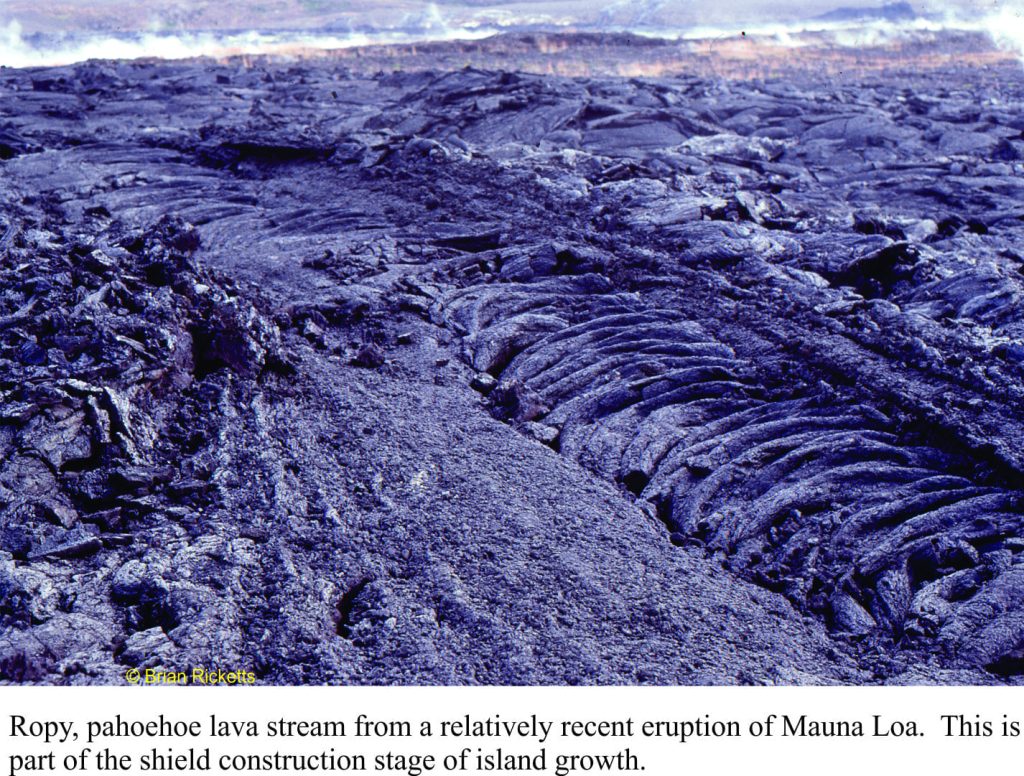 Seamount construction that extends above sea level sees the onset of new, destructive processes, namely erosion by waves and currents, and sediment removal by streams. Explosive activity is largely replaced by more sedate effusion of lava flows and strombolian-like fire fountains; this is the shield volcano stage, of which Hawaii (the big island) is an excellent but perhaps atypical example. Most oceanic islands never get anywhere near the size of Hawaii. Once volcanic additions have ceased, exposed rock and sediment are gradually whittled away – it’s the beginning of the end, although from a geological perspective it does take quite a long time. In warmer climes the development of vegetation will slow this process.
Seamount construction that extends above sea level sees the onset of new, destructive processes, namely erosion by waves and currents, and sediment removal by streams. Explosive activity is largely replaced by more sedate effusion of lava flows and strombolian-like fire fountains; this is the shield volcano stage, of which Hawaii (the big island) is an excellent but perhaps atypical example. Most oceanic islands never get anywhere near the size of Hawaii. Once volcanic additions have ceased, exposed rock and sediment are gradually whittled away – it’s the beginning of the end, although from a geological perspective it does take quite a long time. In warmer climes the development of vegetation will slow this process.
At tropical latitudes the erosional removal of rocky foundations is delayed by the growth of fringing coral reefs, a grand process that can take 10s of thousands of years. Reefs absorb most of the wave energy thus preventing wholesale erosion of coasts. Atolls are a kind of end-run in this protracted history.
An additional process that governs the longevity of oceanic islands and atolls is the effect that the volcanic edifice, commonly several 1000m high, has on the crust beneath it. The edifice acts as a massive load that bends or flexes the crust. The big island of Hawaii is so large it has flexed the crust downward by as much as 7km! Furthermore, as the ocean crust ages it also becomes colder and denser, causing it to sink; hence oceanic crust as well as the seamount that sits atop, will subside. As a general rule (there are exceptions) ocean water depths over old, cold crust tend to be greater than depths over younger, warmer crust. Consequently, oceanic islands are continually subsiding. Subsidence rates are generally low, but even 1-2mm/year can have dire consequences for low-relief islands and atolls.
Charles Darwin was one of the first to recognize the significance of long-term island subsidence for the formation of atolls. Fringing reefs will form if coral growth keeps pace with island subsidence (i.e. sea level is rising relative to the island); Darwin recognized the need for this delicate balancing act. At some time, perhaps after 100s of thousands or even millions of years, the rocky island has foundered beneath the waves. All that remains is a lagoon and encircling reef; an atoll (watch the NOAA animation). Darwin’s diagram is always worth a second look!
A double whammy
Most oceanic islands, including the submerged foundations of atolls, are subsiding, slowly, inexorably. Pounding seas and lashing rain also seem determined to reduce the rocky foundations to rubble. Add rising sea levels to this equation and the problems are exacerbated. Current average global sea level rise is about 2-3mm/year (this is an average rate; actual rates vary from place to place), a value that has a similar order of magnitude (but opposite direction) to island subsidence rates. The net effect is to increase the rate at which island shorelines are retreating. On many larger, rocky islands this effect may go unnoticed. But on low-lying islands and atolls, shoreline retreat can have significant impacts: for example, storm surges and high tides move farther inland; fresh groundwater lenses, that have very limited extent on low-lying islands, become even more confined with increasing saline intrusion. Kiribati and Marshall Islands, with dozens of island and atolls that are mostly 2m and less elevation, are already experiencing these problems.
The rates of geological processes leading to the formation and eventual destruction of oceanic islands tend to be slow (100s of thousand to millions of years); Mauna Loa on Hawaii is 600,000 to 1 million years old. We need to be mindful that such rates are usually averaged over millennia and don’t account for short-lived events like tropical cyclones. However, I suspect that this knowledge would be cold comfort for someone living on an atoll, who is faced with increasing rates of flooding and depleted water supplies.
